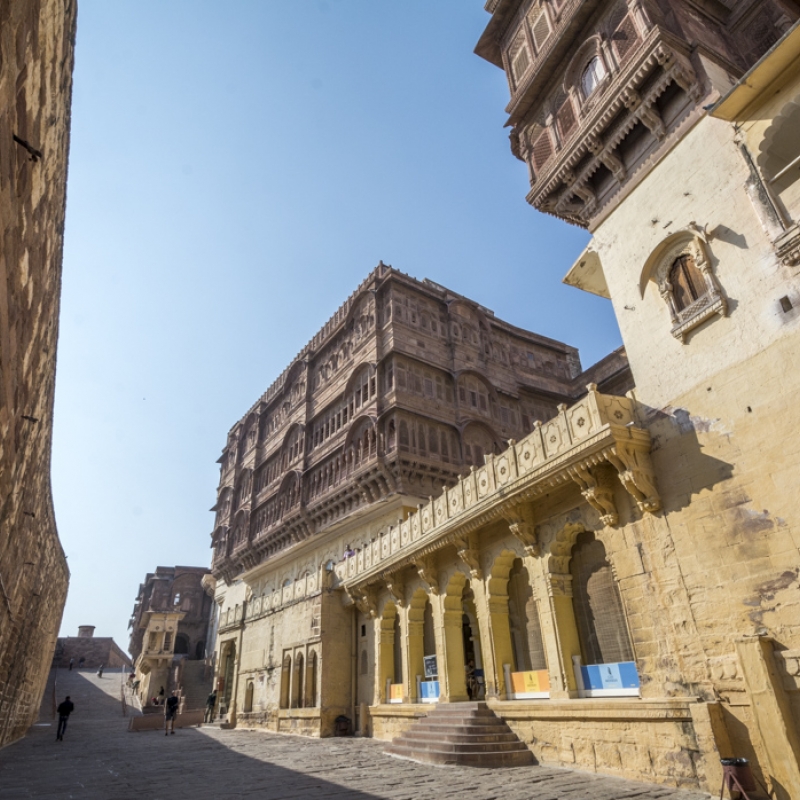Between the rugged Aravalli Mountains and the parched desert landscape of the Thar lies the region of Marwar in present-day Rajasthan. This largely arid swathe of scrubland with a few sturdy trees came to be the home for numerous pastoral communities that reared camels, cattle, goats and sheep. In this desert frontier region, many pastoralists coexisted with the small sedentary communities that practised agriculture, largely growing millets fed on the scanty dew, deep wells and the scattered showers. The Ahirs and the Gujjars, the dominant pastoralist group in this region, soon came under the sway of the imperial Pratiharas located in Kannauj. Inscriptional evidence found on royal pillars or sthambs as well as stray Brahminical and Jain temples in Osian (located roughly 70 km away from present-day Jodhpur) in between eighth and eleventh centuries CE suggest that this region was largely within the sphere of influence of the Gurjara–Pratiharas that lasted until the invasion of Mahmud of Ghazni in the early years of the eleventh century. The invasions led to large-scale political instability and the rise of numerous factions, especially the Chauhanas, Paramaras and Chalukyas, fighting to fill the power vacuum in this region.
Mandore, a small neighbourhood and presently a suburb of Jodhpur, was the centre of the Paramaras in the late twelfth century and was subjected to numerous invasions, occupied from time to time by Nasiruddin Mahmud, the son of Sultan Iltutmish, who had established the Delhi Sultanate. However, long-term skirmishes within the region, increasing political instability and the battles of succession in Delhi ensured that this region soon fell under Chauhana power once again. This alternation of power between the sultan of Delhi and the local feudatories in the region continued well into the fourteenth century with numerous raids, skirmishes, and back and forth of control aided by the armed pastoral mercenaries of this region. With the death of Sultan Firoz Tughlaq in 1388 CE, the disintegration of the Tughlaq Empire commenced. The invasion of Timur in 1398 struck a decisive blow to the Delhi Sultanate. It is in the context of the post-Timurid political landscape of northern India that we can understand the establishment of the Rathore principalities of Jodhpur and Bikaner.
The Paramaras invited the chief of the Rathore clan, Rao Chunda, to expel the governor of Marwar appointed by the Delhi Sultanate. The Rathore clan claims to trace its descent to the Sun God, calling themselves Suryavanshi Rajputs. However, an inscription in Devali from the late thirteenth century suggests that the Rathores descended from Siha, a minor prince from Kannauj, who marched westward to seek his fortunes in the arid belt adjacent to the Thar desert and had initially encamped near Ajmer. In return for his services, Rao Chunda was married off to the daughter of the local Paramara chieftain and was granted Mandore as a part of his dowry. Rao Chunda proved to be an able leader who managed to consolidate his positions by forcing different clans such as the Sindhals, the Balechas, the Manglias and other Rajputs of the region to accept his overlordship.
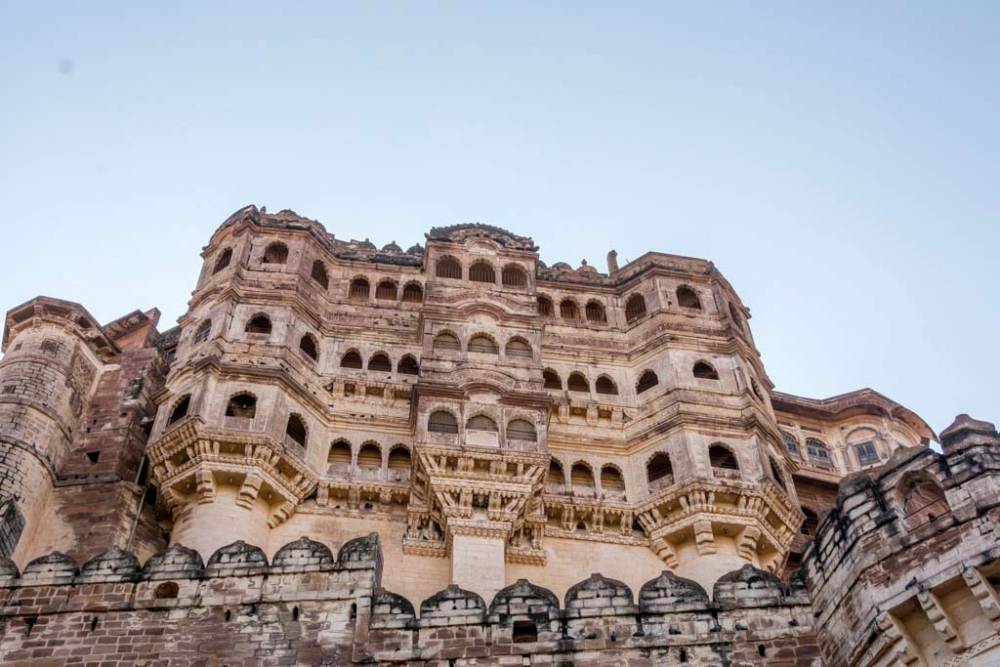
During this period of political anarchy, the small settlement of Paliwal Brahmins (located near the town of Pali in Rajasthan) invited the Rathore chieftains to protect the community from the continuous military onslaughts inflicted by the Delhi Sultanate as well as the martial pastoralists and hill dwellers, such as the Minas and the Mers. The fifteenth century set the trend whereby numerous Rajput clans started seeking military alliances with one another, cemented by bonds of marriage, which ensured continuous Rajput rule to the exclusion of Muslims and lower-caste pastoralist chiefs. Nevertheless, one must not interpret these kinds of marriage alliances based on superior caste position as a stable alliance, with the Rajput clans of the Sisodias of Mewar and the Rathores of Marwar often coming into conflict with one another. To further substantiate my point that the Rajputs were never always a united front, Rao Chunda was betrayed by a rival Rajput clan of the Bhatis and murdered during ongoing invasions from the rulers of Gujarat in the south.
Rao Chunda was succeeded by a series of inept sons, but his grandson, Rao Jodha, hoped to consolidate the Rathore position in Marwar by the mid-fifteenth century. Abandoning the erstwhile capital of Mandore, Rao Jodha decided to build a massive garrison fortress in 1459 on a rocky outcrop of a mountain at a distance of 9 km from Mandore. This rocky outcrop, which was called Bhakucheeria or the Mountain of Birds, has a special geological significance. Called the Jodhpur Group-Malani Igneous Suite Contact, this represents the last phase of igneous activity of the Precambrian age. On this rocky outcrop, a visitor can clearly see the overlying layer of the oldest sedimentary sandstone, limestone and shale which covers the youngest igneous suite rocks. Its geological significance led it to be declared a National Geological Monument.
According to the legend, Rao Jodha displaced the hill’s sole human resident, Chidiyanathji, by soliciting help from the goddess Karni Mata, who is the patron deity of the Charan caste or hereditary bards who formed the retinue of the Rajput chieftains. While fleeing the old hillock of Bhakucheeria, Chidiyanathji cursed Rao Jodha and his descendants that the fortress would always remain short of power. To neutralise the curse and ensure that the new site proved propitious, Rao Jodha buried a man named Rajaram from the Meghwal community (historically an untouchable caste group) alive at the foundations of the new fort, who allegedly sacrificed himself voluntarily. This spot is now named Rao Jodha Falsa and, even today, members of the erstwhile royal family of Jodhpur present a gift to the descendants of the Meghwal family every year on the anniversary of the foundation of the fort. The fort was named Mehrangarh or the Fort of Mihira, the Sun God, to honour their mythic clan progenitor. Many of the Thakurs, or the feudatories of Marwar, also trace their descent to Rao Jodha, and, thus, the Rao (or chief of the Rathores) was never quite considered a sovereign based on divine kingship but was rather treated as a first among equals.
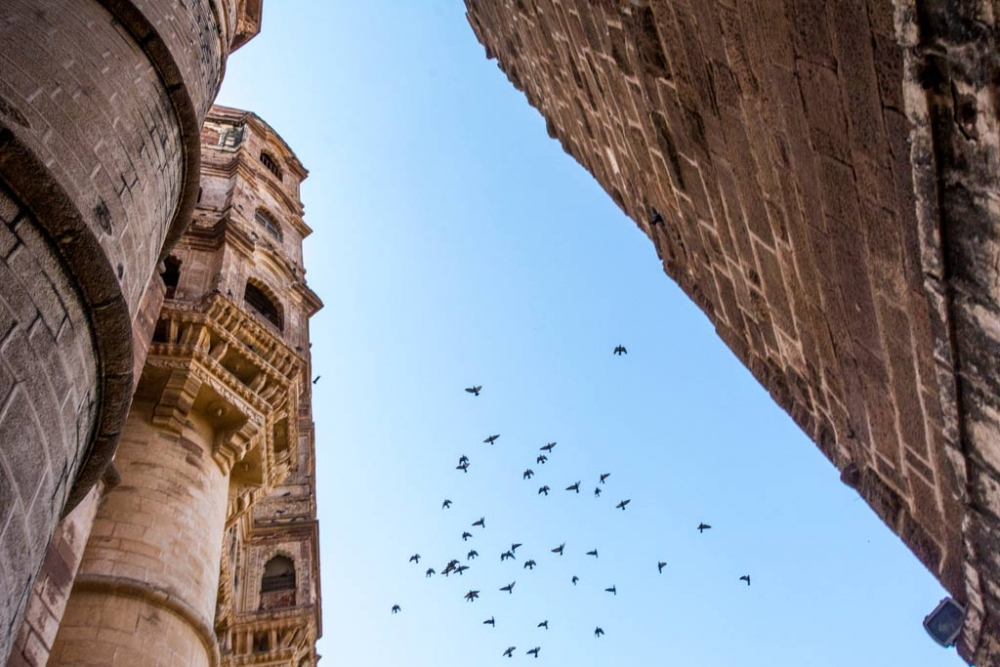
After the death of Rao Jodha, the kingdom fell into the hands of numerous minor and inefficient chiefs who continued to defend Marwar from various threats, such as the sultans of Gujarat and Delhi as well as other Rajput principalities in the vicinity. A small enclave of Brahmins, merchants and artisans grew at the foot of the Mehrangarh Fort, and the city that continued to grow around it was called Jodhpur—after Rao Jodha. The Brahmins who settled in the neighbourhood—named Brahmpuri—painted the walls of their house using a mixture of chunam (quicklime) and indigo, giving the city the sobriquet of the Blue City. The fortifications surrounding the city were built during the reign of Rao Maldeo who came to power in 1532. The old fortified city had numerous gates, such as the Sojati Gate, Nagauri Gate, Jalori Gate and Chinwanchi Gate, which were punctuated with numerous minor openings named baris or windows. These gates were named after the roads that led to these cities, located within the Marwar region. Although most of the old fortifications have now been taken down, many of these gates are under the conservation efforts of Indian National Trust for Art and Cultural Heritage (INTACH). Rao Maldeo also annexed the regions of Nagaur, Sambhar, Merta and parts of Phalodi, and remained neutral during the wars between the Mughal ruler Humayun and Sher Shah Suri. However, the retaking of Delhi and Agra by Humayun and the subsequent succession of Akbar weakened the hold of Rathore rule over many parts of Marwar.
After the death of Rao Maldeo, the Mughal imperial forces fell under the astute military stewardship of Akbar. The Rathores continued to wage wars against Emperor Akbar, but Udai Singh, the successor of Rao Maldeo, soon realised the military supremacy of Akbar and became a vassal of the emperor. With the help of the Mughal imperial forces, Udai Singh vanquished the warring Rathore clansmen and was absorbed within the Mansabdari system established by Akbar. Emperor Akbar rewarded Udai Singh’s allegiance to the Mughal Empire by reinstating him on the family seat at Mehrangarh and awarded him the title of the Raja of Marwar in 1583. Thus, it was only after the establishment of the Mughal suzerainty over Marwar that the Rathore chieftains took on the trappings of kingship. Remembered fondly as Mota Raja Udai Singh, his reign marked a pivotal shift in the history of the Rathore clan.
Raja Udai Singh made a series of strategic alliances with Emperor Akbar, including offering his own daughter’s hand in marriage. The son of Emperor Akbar— Prince Salim (who later succeeded the throne as Emperor Jahangir)—and the princess of Jodhpur solidified the honoured position of the Jodhpur rajas within the Mughal Empire. Besides the title of raja, Udai Singh also received a mansab, or an imperial retinue of 1,500 sowars (cavalrymen in the army), and was instrumental in the annexation of the Gujarat subah (province) within the Mughal Empire. By the end of the sixteenth century, Mota Raja Udai Singh led the forces to expand the Mughal Empire in the north-west as well as the Deccan frontiers.
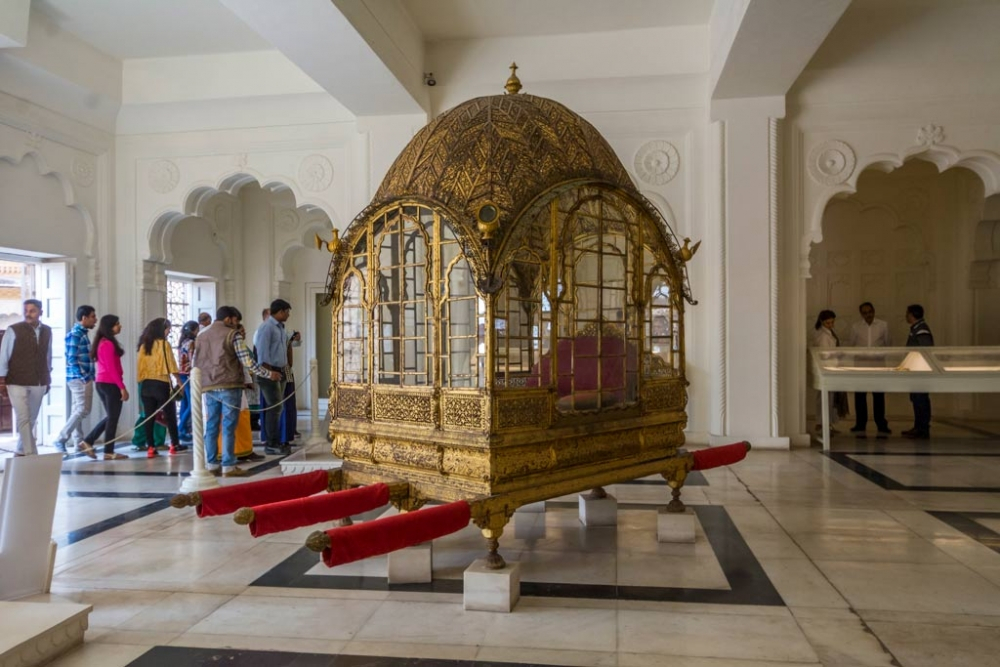
During his reign in Marwar, attempts were made to introduce the Mughal pattern in the administration of Marwar. The nobles of the state were asked to pay peshkash or tribute. The jagir of the fief-holder, on his death, lapsed to the state, and it was to be restored to the successor only when he had paid a large sum by way of peshkash to the Mughal emperor. A new system of revenue collection, judicial administration as well as the reorganisation of the military was witnessed under the overlordship of Emperor Akbar.
With the death of Mota Raja in 1595 at Lahore, Sur Singh, his successor, earned for himself the title of Sawai Raja (literally meaning ‘one and one-quarter of raja’) for the military services that he rendered to Akbar. During the reign of Jahangir, Sur Singh was deputed with Prince Khurram (later, Emperor Shahjahan) to undertake an expedition against Mewar, the Rajput state that had for long resisted the many attempts of Mughal conquest. Under the leadership of Prince Khurram and Sur Singh of Marwar, the imperial Mughal army finally squashed the resistance of Mewar. Govind Das Bhati, the pradhan (prime minister) of Sur Singh, brought about a change in the status of the nobles vis-à-vis the ruler by modelling it on the pattern prevalent in the Mughal court. As against the earlier relationship of the nobility with the chief of Marwar, which was one of brotherhood, it now emerged as that of a master and his servants. In formal durbars, the seats of the nobles were hierarchically fixed. For administration, the posts of diwan, bakshi khansama, hakim, karkoon, daftri, darogha, wakenavis, etc., were constituted.
Raja Sur Singh died during his ongoing campaigns in the Deccan in 1619. Though he was remembered for his military prowess, he was also a man of utmost refinement and hoped to emulate the Mughal taste for refinement and luxury. Located at the fringes of the desert, Jodhpur had in the preceding years devised an intricate and interconnected network of water systems—from water reservoirs and embankments to many stepwells—across the city. Though many of these waterbodies were often commissioned by the royal women of the household, Sur Singh was instrumental in the construction of Sur Sagar—a dam built in 1607 which led to the formation of a small lake located two miles away from Mehrangarh Fort. A charbagh, modelled on the favoured landscaping style of the Mughal emperors, was constructed to overlook the lake. The water from the lake was diverted and bisected a perfectly square plot of land into four equal quarters which were later on planted with numerous scented flowers. This pleasure pavilion came to be one of the favourite picnic spots of the rulers of Jodhpur who later on built a solid sandstone pavilion that would have replaced the erstwhile temporary structures in the late seventeenth century. In the nineteenth century, it also served as one of the residences of the British political agent and resident to Marwar, and since Independence has been converted into a government-run school. After a long-drawn-out legal battle with the Government of India, this property has now been reverted to the Mehrangarh Museum Trust, which is currently undertaking a series of restoration projects to bring this palace back to its erstwhile glory.
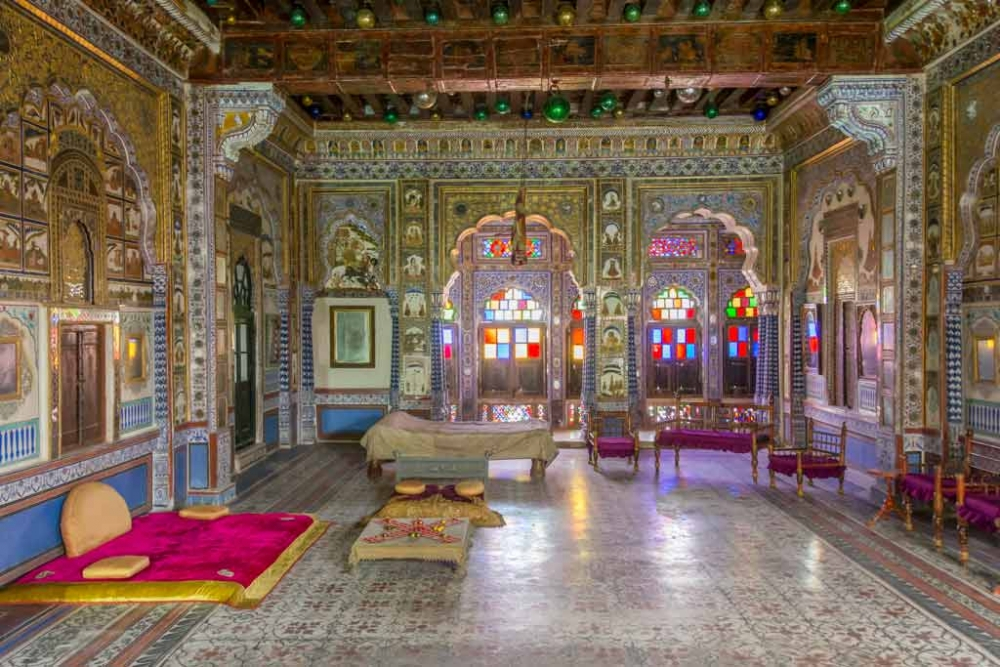
Raja Sur Singh’s successor, Gaj Singh I, soon inherited the gaddi (throne) of Jodhpur and continued the Mughal mandate of fighting the sultanates in Deccan, especially the Adil Shahi dynasty based in Bijapur. Gaj Singh I was succeeded by Jaswant Singh I, who was one of the important generals serving Emperor Shahjahan and the governor of the opium-rich territory of Malwa in Gujarat. He was later the governor of the north-west frontier in Peshawar and Kandahar where he continued to wage battles and checked invasions of the Persian emperor, Shah Abbas. Maharaja Jaswant Singh died in Jamrud, the closest outpost to the Khyber Pass, in present-day Pakistan, in 1678.
On hearing the news of Jaswant Singh’s death, Aurangzeb transferred Marwar directly under the Mughal administration. When in 1679, Ajit Singh, a posthumous son of Jaswant Singh, was born in Lahore, Aurangzeb demanded the infant son to be brought to the imperial court of Delhi. On reaching Delhi, Aurangazeb decreed that the infant son be surrendered to imperial custody, which was promptly rejected by the Rathore contingent. Durgadas and Raghunath Bhati staged a daring escape from the Mughal court and went back to Marwar, where Ajit Singh was raised in concealment at a place of safety. Rallying under the banner of the infant heir-apparent, the Marwar sardars mounted a rebellion against the Mughal forces in Marwar. As the Mughal emperor was occupied with skirmishes and rebellions in the Deccan and Punjab, Durgadas conspired with other Rajput states—such as Mewar—to shake off the banner of imperial rule in the region to the west of the Indo-Gangetic plains. A prolonged Mughal occupation and Rajput resistance continued for around 30 years and stories from this period—for example, the heroics of Durgadas in support of his young prince, Ajit Singh—came to be celebrated by court poets. The narratives of texts like the Ajitodaya Makavyam and the Hukumat ri Bahi turn the reversal into a typical Rajput tale of devotion and daring, of long endurance and eventual reward.
After the death of Aurangzeb in the Deccan in 1707, a war of succession broke out in Delhi, and Ajit Singh took advantage of this position and launched an offensive on Mehrangarh, thereby regaining his hereditary seat. Besides capturing Mehrangarh Fort, Ajit Singh also annexed important forts in Sojat, Pali and Merta, consequently securing Marwar and the important trade route that connected Punjab to the western seaports in Gujarat. After the ascension of Bahadur Shah to the throne in Delhi, both the rulers of Marwar and Amber came under incessant attack from the Mughal forces. Unable to hold out for too long, both Ajit Singh of Marwar and Sawai Jai Singh of Amber accepted the Mughal suzerainty once again. They were commanded to proceed to the Deccan and squash any internal rebellion. Without their vatan jagir, or the hereditary seat, they had no choice but to follow the new emperor in the hope of winning back imperial favour. Ajit Singh and Sawai Jai Singh accompanied Bahadur Shah up to Mandleshwar, after which they abandoned the imperial retinue and found a safe haven in the Mewar court of Rana Amar Singh II. The three most powerful Rajput houses of Western India—the Rathores of Marwar, the Sisodias of Mewar and the Kachhwahas of Amber—formed a pact to expel Mughal authority from the region. This pact was further cemented by a marital alliance where Mewari princesses were married to the kings of Marwar and Amber. Also, the rule of primogeniture was put aside and it was decided that any son born to any of the Mewari princesses would be the first in line to the thrones of Marwar and Amber.
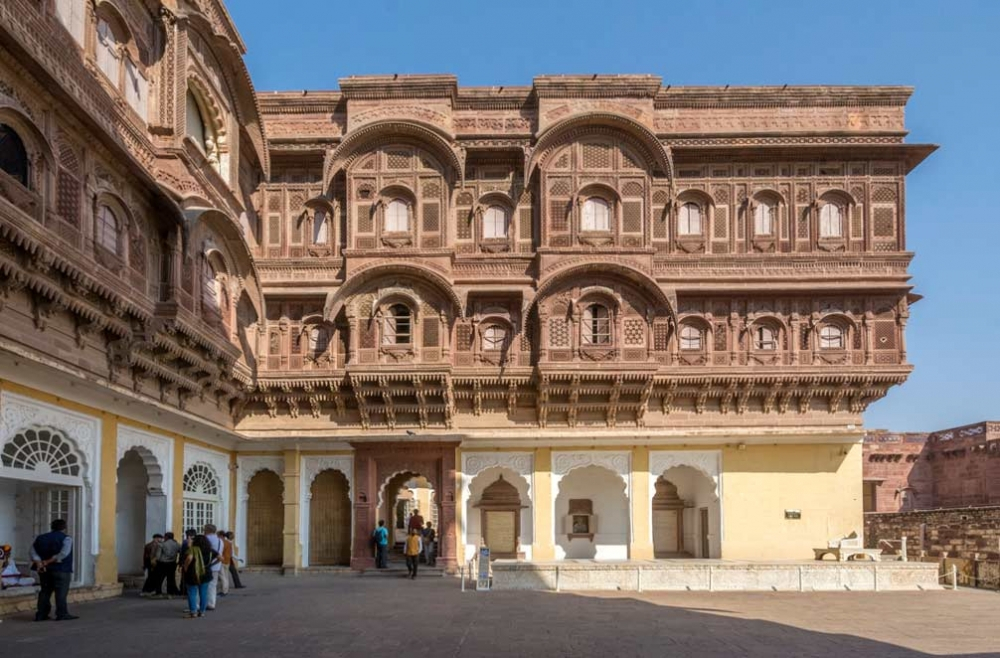
The reign of Ajit Singh witnessed a period of extensive refurbishments and repairs on the almost 200-year old Mehrangarh Fort. Ironically, it was in the period when Mughal suzerainty was not too tight over Marwar that we see the profusion of a Mughal style of architecture. What is today called the Daulatkhana in the Mehrangarh Fort was constructed by Ajit Singh and was formerly known as the Ajit Vilas. We observe the typical features of the Mughal architectural style of the late seventeenth century, namely cusped arches, bangla roofs and a chhaja or the overhanging eaves, made out of a buff sandstone and stucco proliferated with intricate floral decorative embellishments. It was initially a many-pillared courtroom with square piers supported by cusped arches. The pillars themselves have a rope motif, and the keystone is decorated with a stylised iris portrait popularised during the reign of Shahjahan.
The period of Marwar’s defiance against the Mughals did not last for too long. Soon after the death of Jahandar Shah, Farrukhsiyar took control of the imperial throne and mounted an attack on the Rathores of Marwar. Ajit Singh’s daughter, Indra Kunwar, was married off to Farrukhsiyar and the son and heir-apparent, Abhai Singh, was handed over to the custody of the Mughal emperor. Ajit Singh, however, later conspired with the Sayyid brothers, Hassan and Hussain Ali Khan, who had gained tremendous power in Delhi through court intrigue, to orchestrate the murder of the sitting Mughal emperor. After the deed was done, Ajit Singh returned to Jodhpur along with his son and his recently widowed daughter. Indra Kunwar was the last of the Rajput princesses to be married to Mughal emperors and the first, and only, to return to her parental home.
After another period of rebellion against the Mughal rule and the subsequent defeat of Ajit Singh, Abhai Singh was once again to be sent in the custody of the Mughal court in Delhi. In retaliation, Abhai Singh convinced his brother Bakhat Singh to commit parricide in return for the governorship of Nagaur. After taking control over Marwar, Abhai Singh also sued for peace and agreed to continue striking coins in the name of the Mughal emperor and paying a small token peshkash while still retaining a relatively large amount of autonomy in Marwar. This practice of minting coins in the name of the Mughal emperor in Delhi and reading out the azaan in his name continued up to 1857 when the British finally vanquished the Mughal line.
Abhai Singh also secured the governorship of Ajmer and Gujarat and was instructed by the Mughal emperor to crush the rebellion in Ahmedabad. After his victory over the rebellious factions of Gujarat, Abhai Singh made a series of marital alliances with petty chiefs in Gujarat. These princesses brought with them a sizeable retinue and revenue and were integral in patronising numerous jhalras (stepwells) in Jodhpur built in Gujarati style.
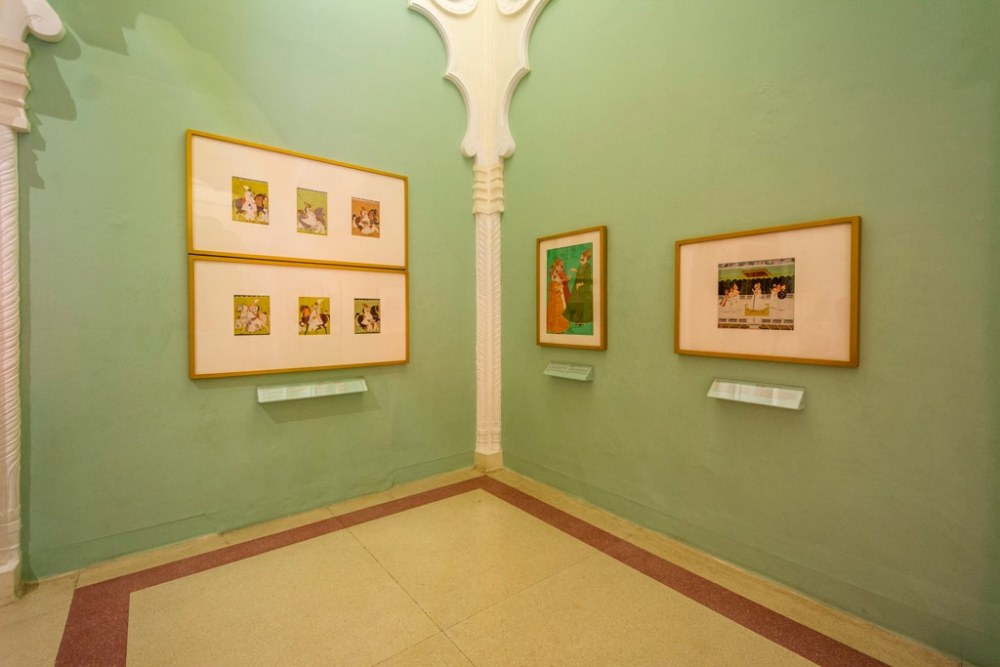
However, during this time of relative peace between the Rajput rulers and the Mughals, a new threat emerged from the South: the Marathas consolidated themselves in the eighteenth century, plundering and raiding numerous erstwhile Mughal strongholds in Gujarat and the Malwa plateau. The Maratha raids continued across northern India, and the Rajput rulers once again came together in the hope of containing the Marathas. However, the slower heavy-chain cavalry of the joint forces of the Rajputs was no match against the Maratha light cavalry, and the Rajputs paid off the Holkar and Scindia Maratha forces by shelling an extravagant tribute of over 22 lakh rupees. Soon, Abhai Singh died, and the throne passed on to Bakhat Singh, who was stationed in Nagaur. The latter had meanwhile transformed Nagaur into an important trade centre, especially for opium and tobacco production, both of which came to gain tremendous prominence in the eighteenth century as an important source of revenue for the Marwar state. With the profits accrued from the lucrative commodity trade, Bakhat Singh had erected numerous pleasure pavilions and palaces in the Ahichhatragarh Fort, which are visible even today in Nagaur. The entire fort had an intricate system of water networks created through terracotta pipes that led to the creation of thriving gardens and orchards in an otherwise arid region. The remainder of Bakhat Singh’s career witnessed numerous internal power struggles against his step-uncle, Ram Singh, whom he finally vanquished in the mid-eighteenth century. Bakhat Singh was succeeded by his son, Bijai Singh.
Bijai Singh inherited a war-ravaged kingdom which was constantly under threat of internal rebellions from the powerful thakurs or feudatories, such as the Thakur of Pokhran. He hoped to devise a new system of gaining legitimacy amongst the various feudatory factions in Marwar. Among the most powerful groups whose support Bijai Singh depended on were the Jain and Baniya merchants who controlled inland trade in western India. Without the support of the Mughal forces to squash any internal rebellion, Bijai Singh depended on the line of credit and supplies that these merchants could provide, especially in a drought-prone region like Marwar. To re-establish political legitimacy in Marwar, Bijai Singh adopted the religious practices of the mercantile community, especially the Vallabhacharya Sampradaya of the Vaishnavas. Numerous paintings were made in the Marwar atelier that broke away from the conventional Mughal style, depicting the exploits of Krishna and the gopis (female cowherds). Bijai Singh was also the principal patron and constructed numerous temples worshipping Krishna as a child in the form of Shrinathji. This phenomenon is not peculiar to Marwar alone since even the ruler of Amber and Mewar adopted a form of Vaishnavism popular amongst the mercantile communities of North India.
Besides the strong mercantile community, Bijai Singh also reached out to unexpected allies, such as Guru Atmaram, a spiritual mendicant who had rallied a mercenary army of warrior ascetics. The eighteenth century also witnessed a booming military market with numerous petty chiefs depending upon irregular cavalry and infantry forces armed with matchlocks popularised during the Mughal rule. Bijai Singh’s reign marked a period of relative internal peace and prosperity, especially after he secured the camel caravan trade across the Thar desert. He was also able to check the progress of the Maratha invaders towards the end of the eighteenth century. An important figure of this period was Gulab Rai, one of Bijai Singh’s favoured concubines, who managed to secure the rule of Bijai Singh in Marwar through court intrigue. Gulab Rai left her mark on the city of Jodhpur with the construction of Gulab Sagar, a prominent waterbody in the old city, and also provided funds for the establishment of a temple nearby. After the death of Bijai Singh and a short interregnum of his son, Bhim Singh, war broke out once again that witnessed the death of numerous claimants to the gaddi of Jodhpur.
During this power vacuum in Marwar, Man Singh, who belonged to one of the lesser branches of the Marwari Rathore family, was propped to power and was crowned as the maharaja in 1803. Man Singh soon came to be embroiled in a long-drawn-out war with the ruler of Jaipur over the right to marry Princess Krishna Kumari of Mewar. During this phase, he undertook the restoration and refortification of Mehrangarh Fort and constructed the Jay Pol in 1808, which now serves as the primary entrance to the fort. Moreover, it was during the reign of Man Singh that numerous Rajput kingdoms signed the Subsidiary Alliance Treaty with the English East India Company. Back when the Sikh kingdoms in the north and the Maratha forces in the Deccan were waging extensive campaigns against the British, the latter sought alliances with Rajput kingdoms who were slowly yet steadily transforming into vassal states under the overlordship of the ascendant British Empire in India. In Marwar, Man Singh continued to face an internal rebellion from the thakurs who propped up Dhokal Singh, a pretender, to the throne. Taking advantage of the new-found British forces, Maharaja Man Singh secured his own kingdom from numerous internal and external threats.

Man Singh also came under the influence of the Naths, a warrior ascetic sect that followed the path set by the mythical Tantric and Hatha yoga practitioner, Gorakhnath. The Naths established a parallel court centred at Mahamandir, a temple complex located at a short distance from Mehrangarh. The Mahamandir, filled with a detailed visual depiction of Nath yogis practising Hatha yoga, now lies abandoned in one of the suburbs of Jodhpur city. Under the sway of the Nath yogis, Man Singh also turned increasingly anti-British by violating some of the provisions in the mutually agreed treaties. He waged wars against Jaisalmer, Kishangarh and Sirohi and defied formal requests of attending a durbar organised by Lord Bentinck in 1832. The British retaliated and, in 1839, the forces of the East India Company occupied Mehrangarh Fort with the help of the rebellious Thakurs and other feudatories whose lands, titles and other dues were unfairly snatched by Man Singh, following the advice of the Naths. Man Singh died in 1843.
An avid scholar and poet, Man Singh was deeply interested in the esoteric arts. His private collection of manuscripts is now housed in the Maharaja Man Singh Pustak Prakash library in the Mehrangarh Fort. Besides this, he was a patron of art and literature, and some of the finest illustrated manuscripts were produced in his atelier in the first half of the nineteenth century.
After his death, an extended relation of the Rathores, Takhat Singh of Idar (presently in Gujarat), was crowned as the new ruler of Marwar. Takhat Singh’s reign was a period of relative peace and prosperity, with the British agent housed in Jodhpur effectively controlling the state’s administration. Internal rebellions subsided and the ruler concentrated on conducting large-scale repairs on the public infrastructure in the state and new rules banning slave trade were implemented. However, Takhat Singh, who was a relative outsider to the politics of Marwar, brought with him an influential coterie from Gujarat who took care of the day-to-day administration of the state. This infuriated the feudatories who hoped to mount an offensive in 1856–57 and wholeheartedly joined the Revolt of 1857. At this stage, Takhat Singh provided imperial forces to aid the English East India Company’s army in the many theatres of war that broke out in North India.
Only after the storm of violence subsided towards the end of 1857 and the transfer of power of the Indian Empire under the Crown rule happened was peace re-established in Marwar. This period also witnessed a reorganisation of administrative powers in Marwar which began to function more like a modern bureaucracy. Free from the day-to-day administrative woes of running a kingdom, Takhat Singh retreated into his private world. He maintained a large harem and made strategic marital alliances with numerous smaller Rajput kingdoms from current-day Gujarat and Madhya Pradesh. The paintings from his period depict numerous scenes of hunting, feasting and indulging in leisure activities. However, his reign is also marked by a gruesome accident which occurred in Mehrangarh Fort when lightning struck one of the storerooms that contained the entire fort’s supply of gunpowder. The explosion resulted in widespread destruction of property, forcing Takhat Singh to undertake numerous construction projects. Many of the palaces that we see today at Mehrangarh have been built during the mid-nineteenth century. Prominent amongst his constructions are Fateh Mahal that is perched at the edge of the fort facing the city, and Takhat Vilas which is infused with numerous wall and floor paintings, depicting Takhat Singh as Dhola from the folk epic Marwar Dhola-Maru. He also constructed the Chokhelao Bagh Palace and Garden complex to house his numerous concubines. The Chokhelao Bagh palace is built on a fortification that overlooks the ravines of what is now Rao Jodha Natural Park. It also houses one of the best-preserved remnants of a Rajput garden, a variation on the Mughal garden that eschews the formal symmetry for a more imaginative and eccentric landscaping schema. Water was drawn from the two waterbodies, Ranisar and Padamsar, using a Persian wheel, which irrigates the vast fruit orchards as well as seasonal shrubs and herbs where scented flowers bloom.
Takhat Singh’s cordial relationship with the colonial state continued with the succession of his son, Jaswant Singh II. The colonial state often intervened in the conflicts between the royal family and the numerous feudatories, and a system of checks and balances were put in place to avoid any potential civil strife. The old system of the army was disbanded and new centralised state forces came into being in the 1880s. Jaswant Singh II shifted his residence from Mehrangarh Fort and opted to stay at the palaces of Rai ka Bagh and Ratnada, located on the outskirts of the city. The fort, with its temples and strategic military importance, was never fully abandoned but the old fifteenth-century structure was not deemed suitable for permanent residence. Following his death in 1895, the old practice of raising cenotaphs in Mandore was abandoned, and Jaswant Singh’s widowed wife commissioned the construction of a new memorial located on a plateau on the new route from Jodhpur to Mehrangarh Fort. This new marble building, called Jaswant Thada, is a unique example of late Rajput architecture with its pyramidal spiral with rows of slender chhatris. The interior of this monument is adorned with portraits of all the previous rulers of Jodhpur and provides a magnificent site for the memorialisation of the exploits of the kings of yore.
After the death of Jaswant Singh II, his son, Sardar Singh, assumed kingship. As he was only 15 years of age, Sir Pratap Singh, the brother of Jaswant Singh II, was appointed as the regent to govern the kingdom. When Sardar Singh turned 18, he was invested with full state power. During his reign the city of Jodhpur extended beyond the walled city to the new suburb of Sardarpura. The main commercial district was resettled to the Nai Sarak (or new road) area with the Ghantaghar, or Clock Tower, dominating the locality. The Clock Tower, signifying the arrival of modern clock time, was constructed in a Rajput revivalist vocabulary and resembled the vijay sthambs (victory towers) from the pre-Mughal instances of Rajput architecture.
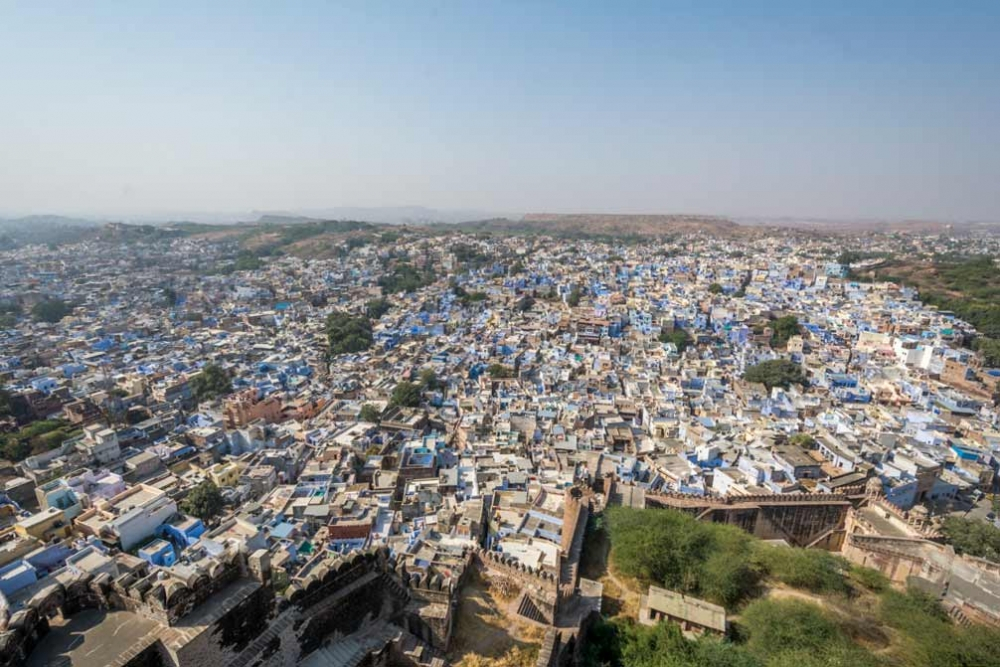
After the death of Sardar Singh, his son Sumer Singh came to the throne when he was only 12 years of age, in 1911. Sir Pratap Singh, who had recently returned after assisting the British forces in the Boxer Rebellion of China, was once again appointed as the regent to the Marwar gaddi. However, Sumer Singh soon passed away in 1918 and was succeeded by his younger brother, Umaid Singh, with Sir Pratap being called again to serve as the regent to the throne.
Umaid Singh was educated in Rajkumar College in Rajkot and, later on, in Mayo College, Ajmer—schools which were specifically established in the previous century to provide Westernised education to members of the royal families and nobility of western India. Umaid Singh was truly fascinated by the dazzling delights that modernity had to offer, especially modern aircraft. It was during his reign that a flying club was established in Jodhpur and initial attempts at creating an air-force base were established in Marwar. Indeed, he was the first Indian maharaja to get a flying license, having graduated from the Royal Air Force School at Cranwell.
The older state homes of Rai ka Bagh and Ratnada Palace were deemed unsuitable for Jodhpur’s new role in the modern world. The rocky outcrop of Chittar, located at the south-east edge of the city, was selected for the royal palace. Architect H.V. Lanchester was appointed to design the new royal palace. He had earlier been denied the privilege of designing the new imperial capital in Delhi (though he did serve on the City Planning Board); however, he had the distinction of designing the Legislative Assembly Building in Lucknow. For the construction of Umaid Bhavan Palace, also called Chittar Palace, he opted to use buff sandstones in a style that fused elements of classicism with the dominant international art deco style. Similar to the erstwhile Viceroy’s House in Delhi, currently, the Rashtrapati Bhavan, Indian decorative motifs embellish this monumental palace. The interiors of the palace are decorated with numerous mural paintings in the art deco style by the Polish artist Stephan Norblin that use old myths from Hindu mythology and instances from historical events in Marwar rendered in the modernist style.
This period also witnessed an immense nationalist churning that had its impact in Marwar. Bodies like the Marwar Seva Sangh and Marwar Hitkarni Sabha were formed in Jodhpur to organise the masses against the exploitation of feudal and imperial forces and to bring to light issues related to the corrupt and ineffective bureaucracy in Marwar. With the outbreak of World War II, the region continued to witness tremendous political upheavals. A popular movement against feudal elements was well underway when Umaid Singh passed away in 1947. He was succeeded by his son, Hanwant Singh, who entered into negotiations with the newly independent Government of India and Home Minister Sardar Patel, and decided to accede to the new Union of India.
After the abolition of the privy purses in 1971, the importance of the royal family declined tremendously; nevertheless, the Rathores of Marwar continue to remain a significant cultural presence in Jodhpur. The old seat of Mehrangarh has been transformed into a museum, and the new palace of Umaid Bhavan is now transformed into a five-star hotel that caters to national and international tourists who visit Jodhpur. Jodhpur is currently the second-most populous city in Rajasthan and is the seat of the High Court of Rajasthan.
Bibliography
Bhargava, B.S. Marwar & the Mughal Emperors. Delhi: Munshiram Manoharlal Publishers, 1966.
Crill, Rosemary. Marwar Painting: A History of the Jodhpur Style. Mumbai: India Book House, 2000.
Diamond, Debra, Glynn, Catherine and Jasol, Karni Singh. Garden & Cosmos: The Royal Paintings of Jodhpur. Washington: Thames and Hudson, 2009.
Parihar, G.R. Marwar and the Marathas: 1724-1843 CE. Jodhpur: Hindi Sahitya Mandir, 1968.
Reu, B.N. Glories of Marwar & the Glorious Rathors. Jodhpur: Archaeological Department, 1943.
Sahai, Nandita. Politics of Patronage and Protest: The State, Society and Artisans in the Early Modern Rajasthan. Delhi: Oxford University Press, 2006.
Sharma, G.D. Rajput Polity: A Study of Politics and Administration of the State of Marwar. Delhi: Munshiram Manoharlal Publishers, 1977.
Singh, Z. The East India Company and Marwar, 1903-1857 AD. Jaipur: Panchsheel, 1973.
Tillotson, Giles. Mehrangarh Jodhpur Fort and Palace Museum. Jodhpur: Mehrangarh Museum Trust, 2010.
———. Umaid Bhawan Palace Jodhpur Modern. Jodhpur: Mehrangarh Museum Trust, 2011.
